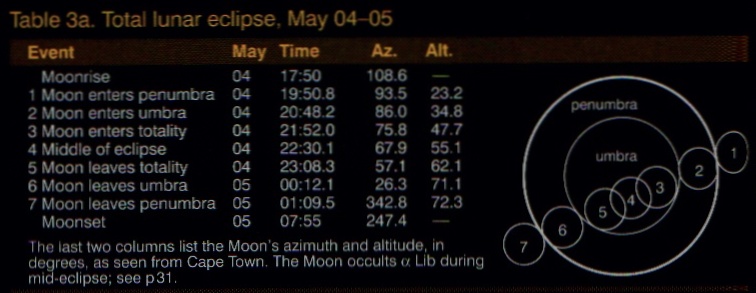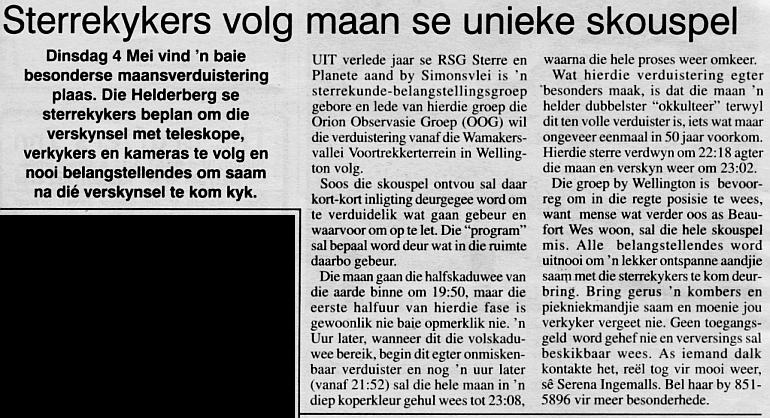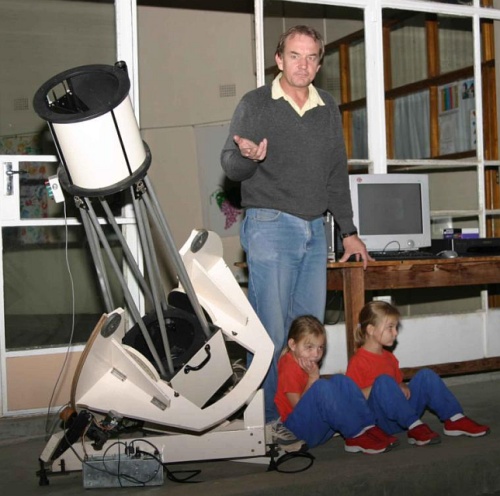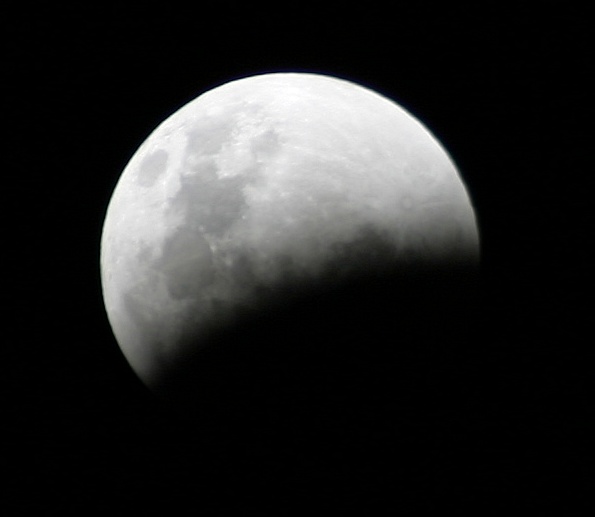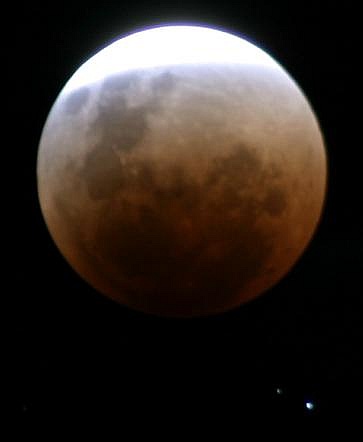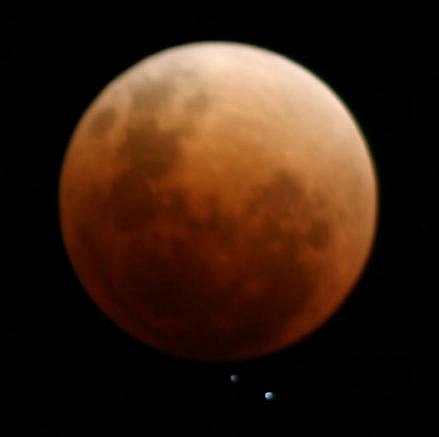Memorable Occultation
|
(This article was originally published in MNASSA, August 2004) Almost identical to 1882, when that year's Transit of Venus was preceded by a spectacular event, a couple of rare spectacles pre-empted the 2004 Transit. Although 2004's double comet show was by far not as spectacular as the Great Comet of 1882, it was supplemented by a double star occultation while the moon was in full eclipse on May 4, 2004. I first became aware of this event in the beginning of the year while reading through the wonderfully revamped ASSA Handbook, Sky Guide, Africa South. Since the times of the event favoured viewing for working people, even though it occurred on a weeknight, ideas of arranging a special event involving the general public, came to mind. After all, it would be extremely selfish not to share an event occurring on average only once in 50 years.
The search for a suitable venue, brought me to the terrain of the Wamakersvallei Voortrekkers (Boy Scouts) in Wellington. Being on the edge of town and with the building cutting off the town's lights, proofed ideal. Awareness of the event was created by placing a short articles in local papers of Paarl/Wellington as well as Somerset West. Members of the informal OOG (Orion Observation Group), based mainly in the Boland, were specially invited to come and spend a laid-back evening under the stars. Apart for bringing a picnic basket and blanket, people were encouraged not to forget their binoculars.
Some people arrived early, settling on camp chairs around braai-fires while amateurs started setting up telescopes, cameras, binoculars, etc. A total of six telescopes, manned by observers as far as Worcester, Somerset West and Durbanville followed the "show". Around 40 people in total, some from as far as Hermanus, joined the event. Most stayed all night while others came for part, some only later after noticing the Moon being eclipsed, suddenly remembering reading about our gathering in the paper.
Even if we arranged it ourselves, could we not have managed more perfect weather! Apart from being perfectly clear, the temperature was very bearable with not a hint of dewing. Even the seeing was good enough, enabling Adri Louw to split the Cassini Division in Saturn's rings, using a 75mm refractor. I prepared a short presentation which was presented a few times during the evening, every time a number of new faces gathered. This explained eclipses as well as occultation's, illustrated by images and a computer animation of what is the night has installed. The rarity of this special occultation, together with the fortunate position we were in, due to our location, was stressed.
We followed the different phases of the eclipse unfold and as it got darker, telescopes and binoculars were aimed at other objects, in particular comet NEAT C/2001 Q4 which became visible to the naked eye.
Watching and occultation is normally a one person event - only the one with his or her's eye at the eyepiece can witness this event, lasting only a few milliseconds. In an attempt to bring this event to a larger audience, I rigged up a modified surveillance camera at Newtonian focus of my 9-inch. The camera's video output was fed into a video recorder and displayed on a monitor.
About half an hour after the moon entered full eclipse, a group of expectant onlookers eagerly gathered round the monitor and nobody dared to even blink an eye. A spontaneous cheer was uttered by everybody as α1 Librae was the first to disappear behind the moon like a light being switched off. Brighter α2 Librae followed about 15 minutes later with similar response from its onlookers. Being recorded on tape, those who missed it, could relive the event by watching a reply. It would take half an hour for α1 to re-appear but exactly where it will happen is always the million dollar question. To ensure that the camera was looking at the right spot and to be aware of when to expect it to happen, a live simulation using a planetarium program was vital here. Similar roars from the group resulted as the two stars, in brightness order, instantly popped out, one by one from behind the moon again. With the luxury of four events to play with, some people got adventurous and experimented with different methods of observing them. It was found that the re-appearance of bright Zubenelgenubi (magnitude +2.8) was easily visible with the naked eye while the moon was still hidden by the earth's umbra. For some people the occultation was even more unforgettable than the actual eclipse. |
 Frames grabbed from the video footage recorded of the event with the times they occured shown. (Click here for an animation of the footage - 880kByte) Willie Koorts |
|
© 2007 OOG. Alle regte voorbehou |
